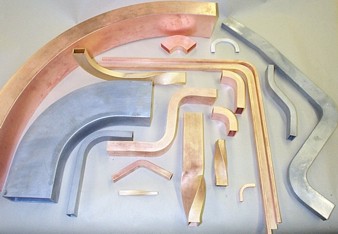Wave Guide components include Circulator, waveguide directional couplers, waveguide load, tuners, waveguide Tee, straight waveguide sections and bends etc. RF and microwave waveguide components are used to transmit, the microwave energy generated from the source like magnetron to the load like an antenna.
A waveguide is a structure used to guide electromagnetic waves, such as light waves or radio waves. Its main components include:
Core: The core is the central part of the waveguide through which the electromagnetic waves propagate. It is typically made of a material with a high refractive index to ensure total internal reflection and efficient wave propagation.
Cladding: Surrounding the core is the cladding, which has a lower refractive index than the core. The cladding helps confine the electromagnetic waves within the core by providing a barrier against leakage.
Buffer Layer (if applicable): In some waveguides, especially optical fibers, there may be a buffer layer between the core and cladding. This layer provides mechanical support and protection to the core.
Coating (if applicable): Optical fibers often have a coating layer surrounding the cladding, which serves to protect the fiber from environmental damage and provide additional mechanical strength.
Input and Output Ports: These are the points at which electromagnetic waves enter and exit the waveguide. Input ports are where signals are injected into the waveguide, while output ports are where signals are extracted.
Bends and Branches: Waveguides may include bends or branches to route the electromagnetic waves along desired paths. These features are designed to minimize signal loss and distortion.
Terminations: Terminations are used to absorb or reflect unwanted signals at the end of the waveguide to prevent reflections that could interfere with the main signal.
These components work together to efficiently guide and manipulate electromagnetic waves within the waveguide structure for various applications such as communication, sensing, and imaging.

